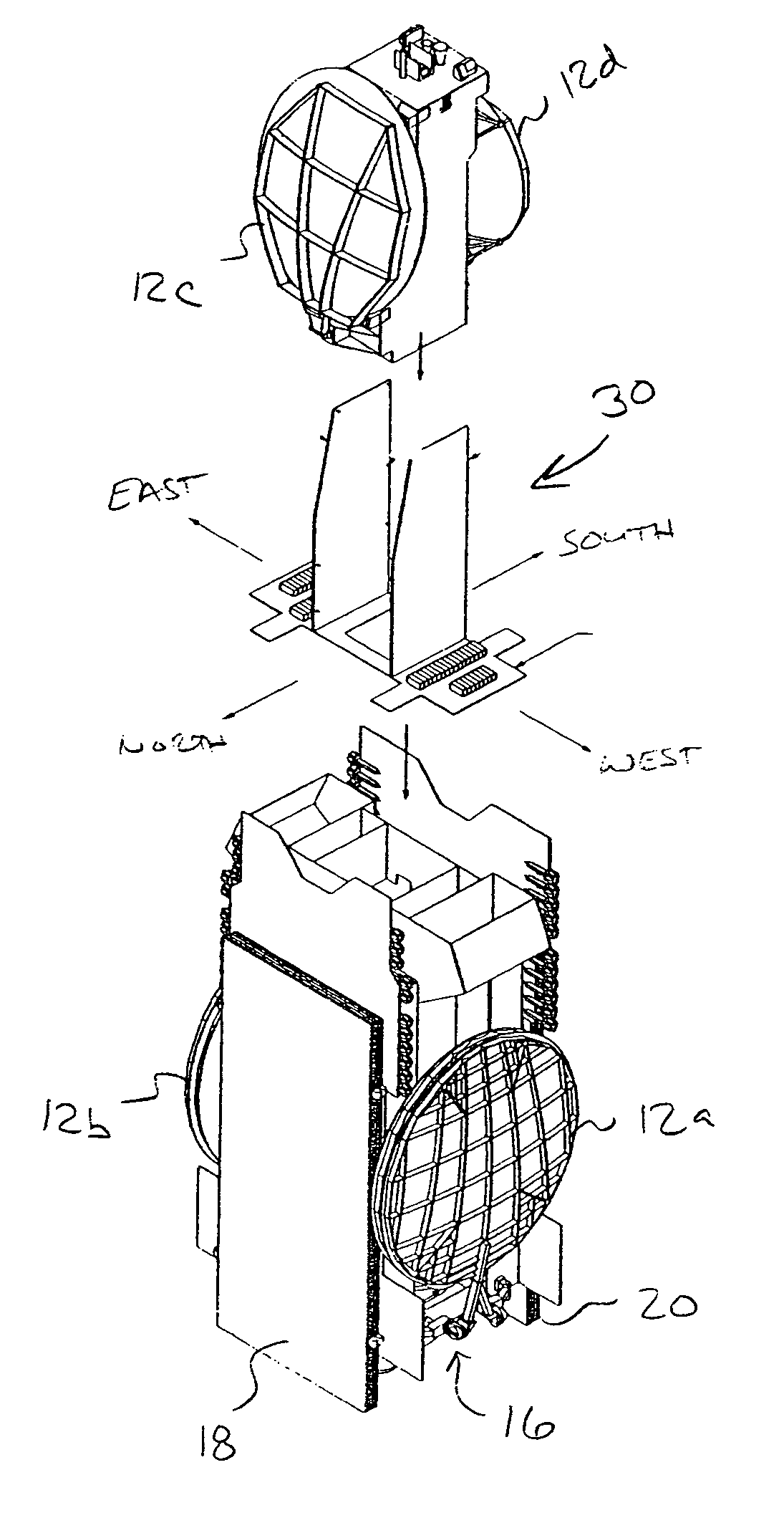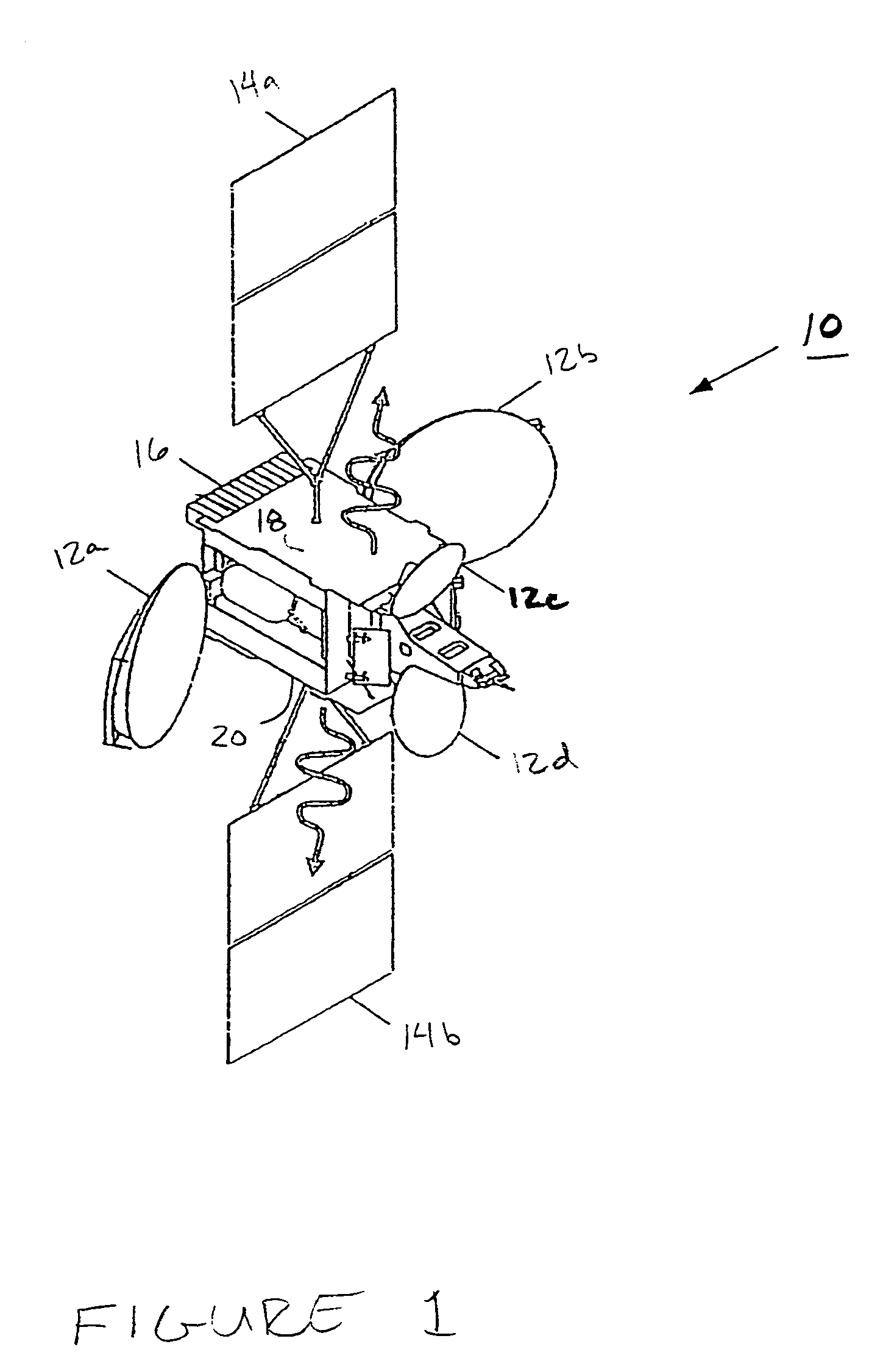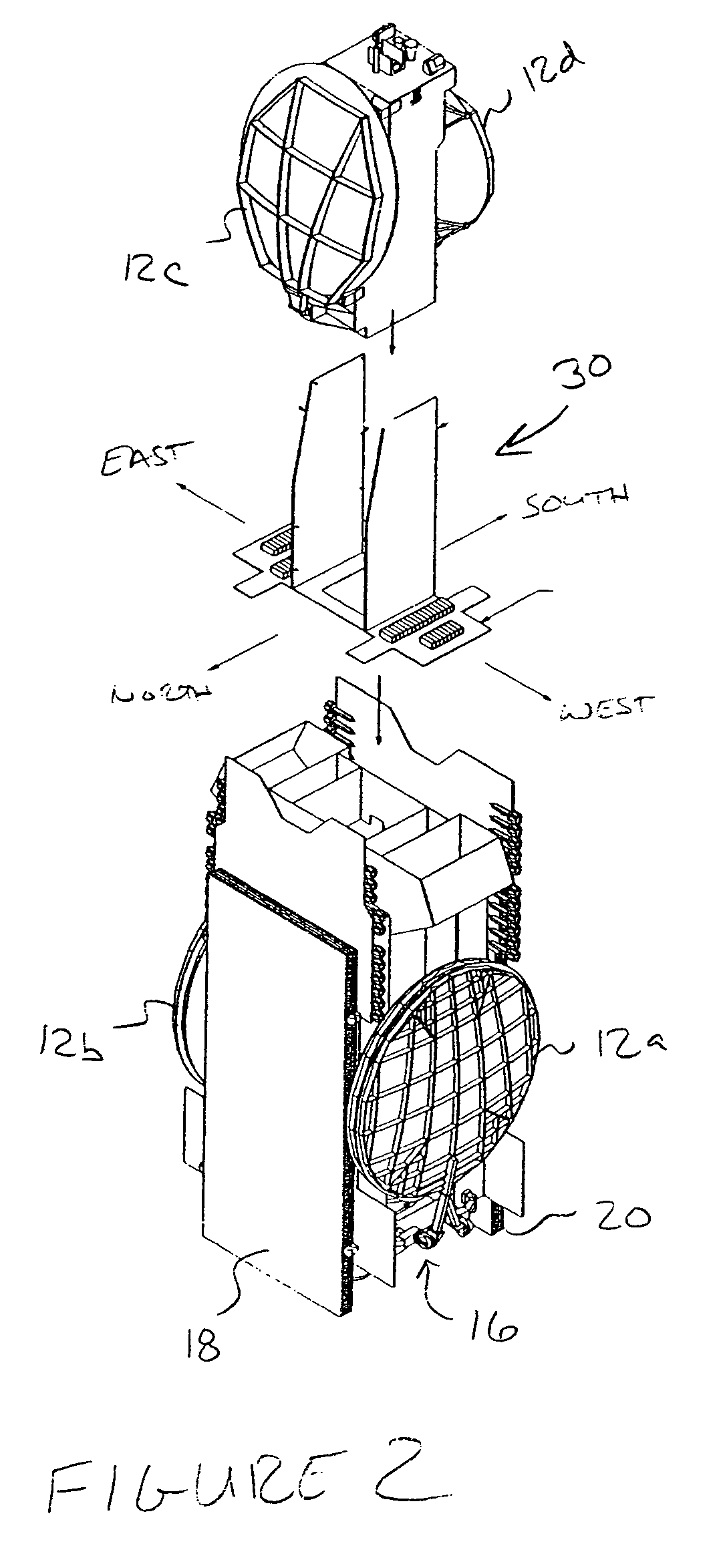Independent East/West thermal management system
a technology of thermal management system and independent technology, applied in the field of dissipation of heat, can solve the problems of significant heat dissipation problem, limited performance of satellites, weight and payload capacity of satellite launch vehicles, etc., and achieve the effect of increasing and improving the heat dissipation capability of satellites and dissipating hea
- Summary
- Abstract
- Description
- Claims
- Application Information
AI Technical Summary
Problems solved by technology
Method used
Image
Examples
Embodiment Construction
[0017]The detailed description set forth below in connection with the appended drawings is intended as a description of various embodiments of the invention and is not intended to represent the only embodiments in which the invention may be practiced. The detailed description includes specific details for the purpose of providing a thorough understanding of the invention. However, it will be apparent to those skilled in the art that the invention may be practiced without these specific details. In some instances, well known structures and components may be shown in block diagram form in order to avoid obscuring the concepts of the invention.
[0018]FIG. 1 is a diagram depicting an example of a satellite 10. Satellite 10 includes reflector dish antennas 12a to 12d, solar panel arrays 14a and 14b, payload compartment 16 and thermal radiating panels 18 and 20. As shown in FIG. 1, satellite 10 has the reflector dish antennas 12a to 12d and the solar panel arrays 14a and 14b deployed in an...
PUM
 Login to View More
Login to View More Abstract
Description
Claims
Application Information
 Login to View More
Login to View More - R&D
- Intellectual Property
- Life Sciences
- Materials
- Tech Scout
- Unparalleled Data Quality
- Higher Quality Content
- 60% Fewer Hallucinations
Browse by: Latest US Patents, China's latest patents, Technical Efficacy Thesaurus, Application Domain, Technology Topic, Popular Technical Reports.
© 2025 PatSnap. All rights reserved.Legal|Privacy policy|Modern Slavery Act Transparency Statement|Sitemap|About US| Contact US: help@patsnap.com



